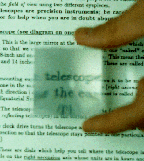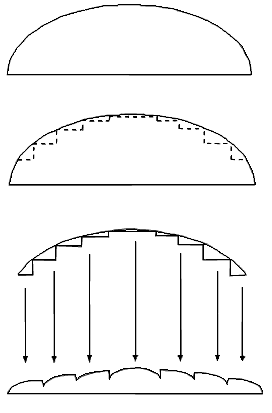Light & Optics Supplementary Module: Fresnel Lenses
Steve Beeson, Arizona State University

Take a look at the Fresnel lens in your Optics Discovery Kit. Feel the surface of the lens.
What's different about it, compared to the other lenses in your Kit?
And how did they make it so much thinner than the other lenses?
de Buffon cut away the inside of the lens and left rings with edges on the outside. Later, Augustin Fresnel modified this idea and the modern Fresnel lens was created. His lenses were first used on the French coast as a lightweight and less-expensive alternative to the old, bulky lighthouse lenses.
Below is a schematic cut-away diagram showing how a Fresnel lens is made.

 Modules
Modules
 Light & Optics
Light & Optics
 Supplementary
Supplementary
 Readings
Readings
 PiN Homepage
PiN Homepage
 ACEPT
ACEPT
 Glossary
Glossary
 Help
Help